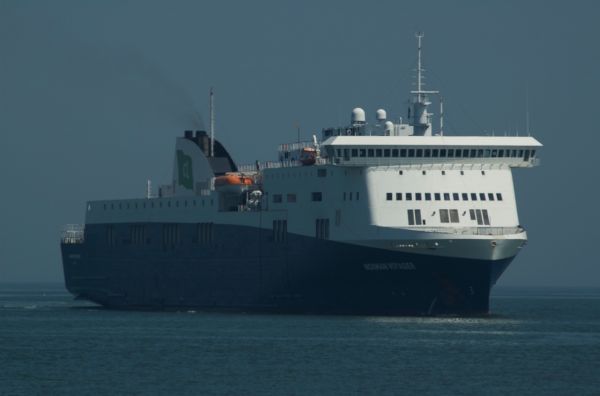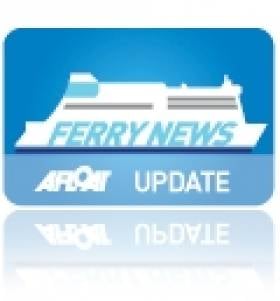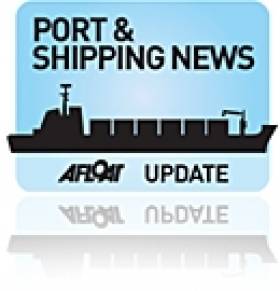Displaying items by tag: RoPax Norman Voyager
New Vessel on the Horizon for Celtic Link Ferries
With an increased capacity of nearly 1,000 passengers accommodated in 428 cabin berths, the vessel will offer a wider choice of bars, restaurents and childrens' play area compared to the current route ro-pax Norman Voyager, which like her successor was built by Italian shipbuilders Visentini. The 25-knot replacement ship will have 2,285 lane metre space for 800 cars or 150 freight vehicles.
Celtic Horizon becomes the first vessel to incorporate the companies name since foundation in 2005 when the freight-ferry Diplomat started operations. In recent years the company has secured the contract to import new trade vehicles from French manufacturers.
Before the newcomer makes her Autumnal debut, the 2006 built vessel is currently operating as Cartour Beta while on charter to Caronte and Tourist's (C&T) Salerno-Messina service in Sicily. To read more click here.
As for the Norman Voyager, she first entered as a newbuild in 2008 for LD Lines weekend operated Rosslare-Le Havre route, subsequently transferred to Cherbourg. LD Lines first foray into the Irish market was short-lived as the ro-pax was sub-chartered to Celtic Link Ferries the following year, though the French company are to transfer the vessel to their Marseilles-Tunis route in November.
- Diplomat
- Celtic Link Ferries
- Ports and Shipping
- RosslareCherbourg
- Norman Voyager
- Visentini
- RoPax
- FreightFerry
- Ferry news
- LD Lines
- Cartour Beta
- Caronte and Tourist
- Visentini ropax
- RosslareLe Havre
- SalernoMessina
- MarseillesTunis
- Irish ferry market
- IrishFrench ferry services
- Irish ferry sector
- Irish Ferries
- RoPax Norman Voyager
- Rosslare Port
- Rosslare Europort
- French trade vehicles
- Citreon
- Peugoet
- Renault
Winter's French 'Ferry' Connections
Direct continental ferry services between Ireland and France will be reduced as of this weekend, writes Jehan Ashmore.
Brittany Ferries last sailing for this year on the Cork-Roscoff route ends today. The 11-hour route is normally served by 'flagship' Pont-Aven but this weekend's final round-trip will be operated by the Bretagne. The former flagship, built in 1989 had served on the Irish route for several years but now operates St.Malo-Portsmouth sailings. Cork-Roscoff sailings resume in 2011 with the first crossing from the Breton port on 1 April 2011 and the corresponding departure from Ireland on 2 April.
In the interim period, alternative routes to France are maintained by Irish Ferries and Celtic Link Ferries. On the Rosslare-Cherbourg route, operated by Irish Ferries, sailings are scheduled to run to 31 December but there will be no sailings throughout January 2011 and up to mid-February. This is to allow the routes cruiseferry Oscar Wilde to undergo annual dry-docking before re-opening the route on 16 February. In addition Irish Ferries operate the seasonal Rosslare-Roscoff route which starts on 13 May.
Celtic Link Ferries also operate on the Rosslare-Cherbourg route. During January 2011, the company will be the only ferry operator providing services between Ireland and France.

Celtic Link Ferries ro-pax Norman Voyager
The 17-hour route to Cherbourg is served by the 2008-built ro-pax Norman Voyager, the newest vessel on the continental routes. Norman Voyager accommodates 800 passengers, 200 cars and up to 120 freight vehicles. There are 110 cabins and facilities for passengers include a bar, restaurant, lounges, cinema and a shop.






























































